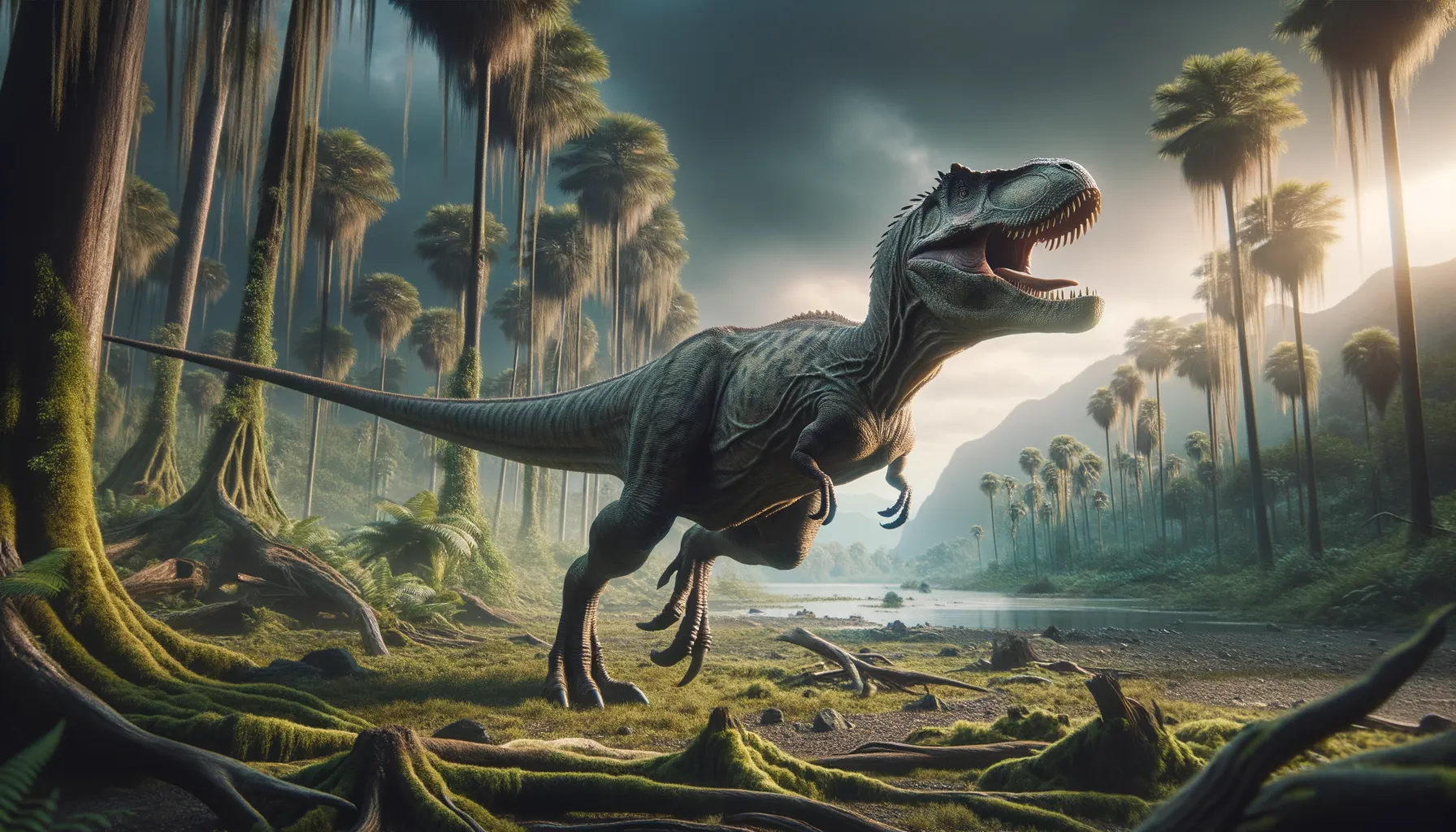
Juratyrant
Agile predator of the Jurassic landscape.
Period
Jurassic
Length
Around 5 meters (16 feet) long.
Height
Approximately 1.5 meters (around 5 feet) at the hip.
Weight
Roughly 500 kg (about 1100 lbs).
Juratyrant was a medium-sized theropod dinosaur that roamed the Earth during the late Jurassic period. Characterized by its agile build, it was one of the smaller members of the tyrannosauroid family, related distantly to the famed Tyrannosaurus rex. This predator played a crucial role in its ecosystem, with adaptations that made it a successful hunter. Its discovery has provided insight into the diversity and evolutionary history of early tyrannosauroids.
Diet
Juratyrant was a carnivorous dinosaur, primarily feeding on other small to medium-sized dinosaurs and animals of its time. It likely used its speed and agility to chase down prey, relying on its sharp teeth to dispatch its meals.
Hunting
This dinosaur was likely an opportunistic hunter, preying on whatever it could overpower. It may have hunted alone or in small groups, targeting weak or distracted prey for an effective strike.
Environmental challenges
Juratyrant lived in an environment that was subject to climatic variations, which might have posed challenges such as fluctuating food resources. It had to adapt to competing predators and other natural threats, ensuring survival in a dynamic ecosystem. Additionally, changes in sea levels could have affected its habitat distribution over time.
Speed
Moderately fast for a bipedal predator.
Lifespan
Estimated to live up to 20 years.
First discovery
Discovered in the United Kingdom during the late 20th century.
Fun Facts
- Juratyrant lived during the late Jurassic period, roughly 155 million years ago.
- This dinosaur was relatively small, estimated to be about 3 meters long, which is around the size of a large dog.
- Juratyrant was a theropod, a group of bipedal carnivorous dinosaurs that includes the famous Tyrannosaurus rex.
- The name Juratyrant means 'Jurassic tyrant', reflecting its role as a predator of its time.
- Fossils of Juratyrant were discovered in England, providing valuable insight into European dinosaurs of the Jurassic era.
- Despite its fearsome name, Juratyrant was likely not the top predator and may have hunted smaller animals.
- Juratyrant belonged to the family Proceratosauridae, which were early cousins to the later, larger tyrannosaurs.
Growth and Development
As with many dinosaurs, Juratyrant likely experienced rapid growth in its early years, reaching maturity relatively quickly. Its development may have been influenced by environmental factors, including food availability and climate conditions. During its growth phase, it would need to learn hunting and survival skills essential for its role as a predator.
Habitat
Juratyrant inhabited regions that were vast and diverse, potentially spanning coastal areas, floodplains, and forested landscapes. These areas were rich with plant life and water sources, supporting a variety of dinosaur species. Its habitat would have been influenced by climatic changes and geological events, which occasionally transformed the landscape.
Interaction with other species
Juratyrant likely interacted with various dinosaur species of different sizes and habits. Its role as a predator meant it may have competed with other carnivores for prey. Additionally, it would have encountered both prey and predators, influencing its behavioral adaptations and strategies for survival.
Natural lifespan
In optimal conditions, Juratyrant might have lived around 15 to 20 years.
Reproduction
Like many theropods, Juratyrant was likely an egg-layer, utilizing nests to protect its offspring. Parental care may have been minimal, with juveniles facing a tough survival journey from early on. The nesting sites were possibly chosen for safety and proximity to food sources.
Social behaviour
Social behavior in Juratyrant might have ranged from solitary to small group interactions, possibly for hunting or mating purposes. Its social structure could have been influenced by environmental pressures and resource distribution. Displays and vocalizations may have played a role in communication during interactions.
Fossil locations
Fossil remains of Juratyrant have been primarily found in the United Kingdom, adding to the diversity of theropod knowledge in Europe. These fossils are crucial for understanding the evolutionary history of early tyrannosauroids in this region. Continued excavations might reveal more about its distribution and lifestyle.
